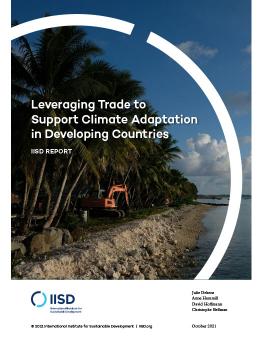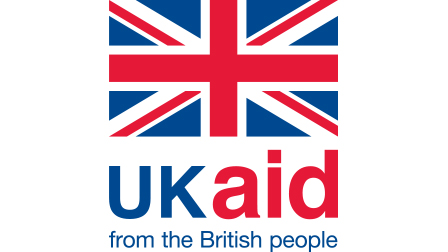
Leveraging Trade to Support Climate Adaptation in Developing Countries
This paper aims to support trade negotiators in leveraging trade for climate change adaptation and to explore the critical role National Adaptation Plan (NAP) processes can play in this regard.
It is well understood that climatic impacts on trade can be addressed by a host of climate adaptation measures, ranging from the development of resilient trade infrastructure to designing new financial products that promote investments in climate-resilient products and services. However, the inverse relationship of leveraging trade as a vehicle to support adaptation efforts has not been given much attention until now.
To help assess the role of trade in supporting adaptation measures, three general pathways are identified:
- Domestic trade policy measures that enhance access to adaptation goods and services: i.e., designing and applying tariffs, subsidies, government procurement rules, intellectual property rights, private voluntary sustainability standards, labels, and certification schemes, minimum requirements, and trade and investment facilitation measures to enable the importation of products and services needed to implement adaptation priorities but also incentivize the development of climate-resilient goods and services for export.
- Access to trade-related financing mechanisms that support climate adaptation, i.e., Using Aid for Trade and the Enhanced Integrated Framework.
- International collaborative frameworks on trade in support of climate adaptation: i.e., providing useful platforms for governments to support the advancement of adaptation priorities in a coordinated manner.
NAP processes offer many resources from which to draw to get a strong understanding of how climate change impacts affect the country and the priority actions and investments the government has identified to minimize loss and harm resulting from these impacts. And these can —and should —be used in mapping out how trade can be more strategically used to help a country meet its adaptation goals. Specifically, NAP documents point to the goods and services that will be required for adaptation, associated financing needs, and the cooperation opportunities that might be pursued with other countries. This paper draws from a review of the literature and consultations with key trade experts.
To illustrate the different links and opportunities offered by NAP processes, a review of NAP documents in three countries of the Pacific region (Fiji, Kiribati, and Tonga) was conducted. The Pacific was selected as a case study because it is an acutely vulnerable region in which the International Institute for Sustainable Development (IISD) has worked via the NAP Global Network since 2017.
Funded by
You might also be interested in
Border Carbon Adjustments: Trinidad and Tobago country report
This report consolidates, analyzes, and presents views and perspectives of stakeholders from Trinidad and Tobago on border carbon adjustment (BCA) schemes to contribute to the global debate on BCA good practices.
Global Dialogue on Border Carbon Adjustments: The case of Brazil
This report consolidates, analyzes, and presents the views and perspectives of stakeholders from Brazil on border carbon adjustment (BCA) schemes to contribute to the global debate on BCA good practices.
Rethinking Investment Treaties
International investment treaties and their investor–state dispute settlement (ISDS) system are facing growing scrutiny. But what would an alternative system—one fit for the challenges of the 21st century—look like?
Border Carbon Adjustments: Pivotal design choices for policy-makers
This policy brief covers the pivotal choices in the design of border carbon adjustments, aiming to provide useful insights to policy-makers and set the ground for the broader discussions about the best practices.
